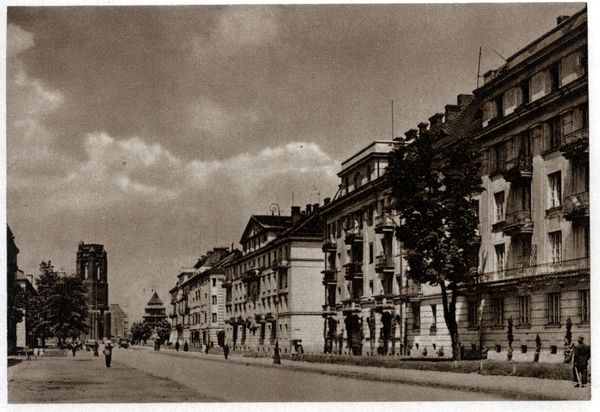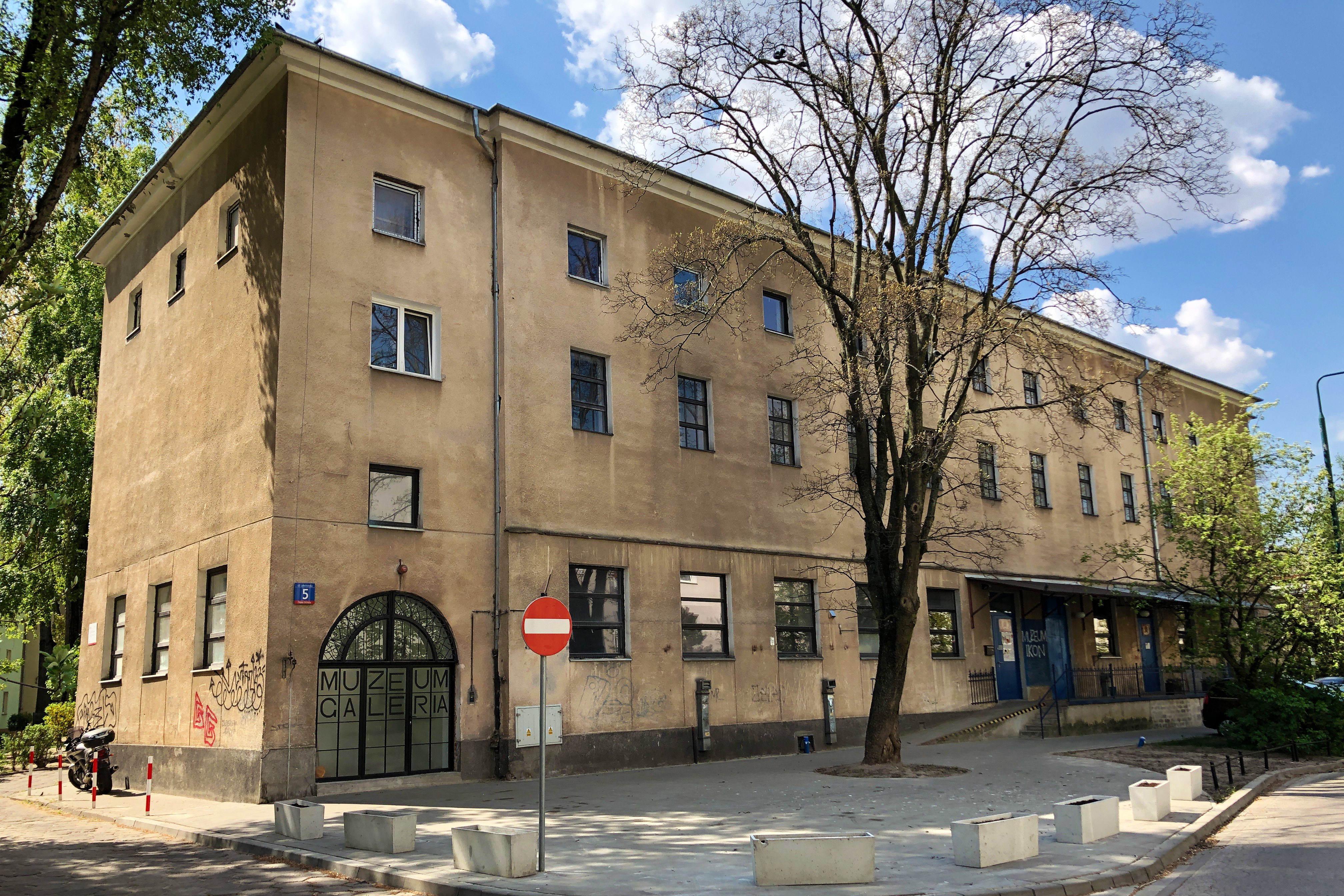|
Ochota
Ochota () is a district of Warsaw, Poland, located in the central part of the city's urban agglomeration. It is Warsaw's most densely populated district and home to the scientific campus of the University of Warsaw. The biggest housing estate A housing estate (or sometimes housing complex, housing development, subdivision (land), subdivision or community) is a group of homes and other buildings built together as a single development. The exact form may vary from country to count ...s of Ochota are: * Kolonia Lubeckiego * Kolonia Staszica * Filtry * Rakowiec * Szosa Krakowska * Szczęśliwice * Osiedle Oaza Neighbourhoods within the district * Stara Ochota * Filtry * Rakowiec * Szczęśliwice See also * Defense of Ochota and Wola (1939) * Ochota massacre * Warsaw Icon Museum References External links * * * Populated places established in the 13th century Populated places established in the 19th century Populated places established in 1951 States ... [...More Info...] [...Related Items...] OR: [Wikipedia] [Google] [Baidu] |
Defense Of Ochota And Wola (1939)
The Defense of Ochota and Wola refers to military actions undertaken by the Polish Army on 8–9 September 1939 during the Invasion of Poland, September campaign, in the districts of Ochota and Wola in Warsaw. The result was the repulsion of the German assault by the 4th Panzer Division and thus the thwarting of the German plan for a rapid capture of the Polish capital. On 8 September 1939, German tanks reached the outskirts of Warsaw. Believing that merely their presence would break the defenders' will to fight, General Georg-Hans Reinhardt attempted to capture the city that same afternoon. However, the German tanks advancing along the were repelled by the fire of Polish artillery and infantry. The next day, after bringing up artillery and the main forces of the 4th Panzer Division, the Germans launched a regular assault. The main focus of the attack was on Ochota, although fighting also broke out in Wola and at Mokotów Field after a while. The Polish defenders managed to repel ... [...More Info...] [...Related Items...] OR: [Wikipedia] [Google] [Baidu] |
Ochota Massacre
The Ochota massacre (in Polish: ''Rzeź Ochoty'' – ''"Ochota slaughter"'') was a wave of German-orchestrated mass murder, looting, arson, torture and rape, which swept through the Warsaw district of Ochota from 1944, during the Warsaw Uprising. The principal perpetrators of these war crimes were the Nazi collaborationist Waffen-Sturmbrigade RONA., the so-called "Russian National Liberation Army" (, RONA), commanded by Bronislav Kaminski. The worst atrocities were committed in the local hospitals, in the Curie Institute, the Kolonia Staszica housing estate, and the Zieleniak concentration camp. In all, about 10,000 residents of Ochota were killed and had their property stolen, after which the district was systematically burnt down by German forces, as were the bodies of many of the victims. The arrival of RONA in Warsaw's Ochota district After the outbreak of the Warsaw Uprising on 1 August 1944, SS- Reichsführer Heinrich Himmler ordered the destruction of the city and th ... [...More Info...] [...Related Items...] OR: [Wikipedia] [Google] [Baidu] |
Ochota
Ochota () is a district of Warsaw, Poland, located in the central part of the city's urban agglomeration. It is Warsaw's most densely populated district and home to the scientific campus of the University of Warsaw. The biggest housing estate A housing estate (or sometimes housing complex, housing development, subdivision (land), subdivision or community) is a group of homes and other buildings built together as a single development. The exact form may vary from country to count ...s of Ochota are: * Kolonia Lubeckiego * Kolonia Staszica * Filtry * Rakowiec * Szosa Krakowska * Szczęśliwice * Osiedle Oaza Neighbourhoods within the district * Stara Ochota * Filtry * Rakowiec * Szczęśliwice See also * Defense of Ochota and Wola (1939) * Ochota massacre * Warsaw Icon Museum References External links * * * Populated places established in the 13th century Populated places established in the 19th century Populated places established in 1951 States ... [...More Info...] [...Related Items...] OR: [Wikipedia] [Google] [Baidu] |
Warsaw
Warsaw, officially the Capital City of Warsaw, is the capital and List of cities and towns in Poland, largest city of Poland. The metropolis stands on the Vistula, River Vistula in east-central Poland. Its population is officially estimated at 1.86 million residents within a Warsaw metropolitan area, greater metropolitan area of 3.27 million residents, which makes Warsaw the List of cities in the European Union by population within city limits, 6th most-populous city in the European Union. The city area measures and comprises List of districts and neighbourhoods of Warsaw, 18 districts, while the metropolitan area covers . Warsaw is classified as an Globalization and World Cities Research Network#Alpha 2, alpha global city, a major political, economic and cultural hub, and the country's seat of government. It is also the capital of the Masovian Voivodeship. Warsaw traces its origins to a small fishing town in Masovia. The city rose to prominence in the late 16th cent ... [...More Info...] [...Related Items...] OR: [Wikipedia] [Google] [Baidu] |
Kolonia Lubeckiego
Lubecki Colony (Polish: ''Kolonia Lubeckiego'', ) is a historical housing estate in the Ochota district of Warsaw, Poland, bordered by the streets Fitrowa, Krzywickiego, Wawelska, Grójecka and Plac Narutowicza. The area is characterized by houses built during the interwar period, with many trees and green spaces. History The local council had originally planned to build a park on the site, however it was later agreed the area was more suitable as a residential area to accommodate the growing number of people working in the city center. Construction began in 1924, with the first buildings designed by several architects including Antoni Jawornicki, Aleksander Sygietyński, Wacław Weker and Teofil Wiśniowski, in the neoclassical style. By the 1930s, however, a more modernist style was incorporated into the estates design. During the Warsaw Uprising, between August 4 and 25, 1944, residents of the estate were embroiled in the so-called Ochota massacre The Ochota massacre (in ... [...More Info...] [...Related Items...] OR: [Wikipedia] [Google] [Baidu] |
Rakowiec, Warsaw
Rakowiec is a neighbourhood in Warsaw, the capital of Poland. Part of the borough of Ochota, it is located in the west-central part of the city. History It originally was a separate village, established in the Middle Ages. Nationalised by the Russian authorities in the late 19th century, the village was occupied by one of the forts of the Warsaw Fortress Warsaw Fortress (, ) was a system of fortifications built in Warsaw, Poland during the 19th century when the city was part of the Russian Empire. The fortress belonged to a Western Russian fortresses, chain of fortresses built in Congress Poland an .... After Poland regained her independence, in 1930 the area was incorporated into Warsaw, and residential areas were soon built there.https://www.wsmrakowiec.pl/historia-rakowca References Neighbourhoods of Ochota {{warsaw-stub ... [...More Info...] [...Related Items...] OR: [Wikipedia] [Google] [Baidu] |
Warsaw Icon Museum
The Warsaw Icon Museum () is the first museum in Warsaw and the third in Poland dedicated to icons. Located in the Ochota district of Warsaw, Poland, the museum is housed in a former boilerhouse. See also *Polish Orthodox Church *Jerzy Nowosielski *Byzantine art *Religious image A religious image is a work of visual art that is representational and has a religious purpose, subject or connection. All major historical religions have made some use of religious images, although their use is strictly controlled and often con ... References External links Prayer service opens Museum of Icons in Poland Religious museums in Poland Religious art Art museums and galleries established in 2011 2011 establishments in Poland Art museums and galleries in Warsaw Ochota Museums established in 2011 21st-century religious buildings and structures in Poland {{Poland-museum-stub ... [...More Info...] [...Related Items...] OR: [Wikipedia] [Google] [Baidu] |
Narutowicz Square
Narutowicz Square (Polish: ''Plac Narutowicza'', ) is a city square located in the Ochota district in Warsaw, Poland. The site is named after Gabriel Narutowicz, the first president of the Second Polish Republic. His monument was inaugurated here in 2002. History The square was laid out in 1923 at the junction of Grojecka and Filtrowa Streets to facilitate the expansion of the district of Ochota and service the city center. Notable buildings on the square include: * Dormitory "Akademik" of the Warsaw University of Technology, at 5 Akademicka Street. * Former revenue house A revenue house is a type of multi-family residential house with specific architecture which evolved in Europe during 18th–19th centuries and became a precursor of what is now known as a rental apartment house and a tenement. In various Europe ... of the Postal Saving Office at 68 Filtrowa Street * Church of the Immaculate Conception of Blessed Virgin Mary, home to the parish of St James the Apostle ... [...More Info...] [...Related Items...] OR: [Wikipedia] [Google] [Baidu] |
Masovian Voivodeship
Masovian Voivodeship or Mazowieckie Province (, ) and any variation thereof, is a Voivodeships of Poland, voivodeship (province) in east-central Poland, containing Poland's capital Warsaw. Masovian Voivodeship has an area of and had a 2019 population of 5,411,446, making it Poland's largest and most populous province. Its principal cities are Warsaw (1.783 million) in the center of the Warsaw metropolitan area, Radom (212,230) to the south, Płock (119,709) to the west, Siedlce (77,990) to the east, and Ostrołęka (52,071) to the north. It borders six other provinces: Warmian-Masurian Voivodeship, Warmian-Masurian to the north, Podlaskie Voivodeship, Podlaskie to the northeast, Lublin Voivodeship, Lublin to the southeast, Świętokrzyskie Voivodeship, Świętokrzyskie (Holy Cross) to the south, Łódź Voivodeship, Łódź to the southwest, and Kuyavian–Pomeranian Voivodeship, Kuyavian–Pomeranian to the northwest. The name of the province recalls the region's traditional ... [...More Info...] [...Related Items...] OR: [Wikipedia] [Google] [Baidu] |
States And Territories Disestablished In 1990
State most commonly refers to: * State (polity), a centralized political organization that regulates law and society within a territory **Sovereign state, a sovereign polity in international law, commonly referred to as a country **Nation state, a state where the majority identify with a single nation (with shared culture or ethnic group) ** Constituent state, a political subdivision of a state ** Federated state, constituent states part of a federation *** U.S. state * State of nature, a concept within philosophy that describes the way humans acted before forming societies or civilizations State may also refer to: Arts, entertainment, and media Literature * '' State Magazine'', a monthly magazine published by the U.S. Department of State * ''The State'' (newspaper), a daily newspaper in Columbia, South Carolina, United States * '' Our State'', a monthly magazine published in North Carolina and formerly called ''The State'' * The State (Larry Niven), a fictional future govern ... [...More Info...] [...Related Items...] OR: [Wikipedia] [Google] [Baidu] |
1990 Disestablishments In Poland
Year 199 ( CXCIX) was a common year starting on Monday of the Julian calendar. At the time, it was sometimes known as year 952 ''Ab urbe condita''. The denomination 199 for this year has been used since the early medieval period, when the Anno Domini calendar era became the prevalent method in Europe for naming years. Events By place Roman Empire * Mesopotamia is partitioned into two Roman provinces divided by the Euphrates, Mesopotamia and Osroene. * Emperor Septimius Severus lays siege to the city-state Hatra in Central-Mesopotamia, but fails to capture the city despite breaching the walls. * Two new legions, I Parthica and III Parthica, are formed as a permanent garrison. China * Battle of Yijing: Chinese warlord Yuan Shao defeats Gongsun Zan. Korea * Geodeung succeeds Suro of Geumgwan Gaya, as king of the Korean kingdom of Gaya (traditional date). By topic Religion * Pope Zephyrinus succeeds Pope Victor I, as the 15th pope. Births Valerian Roman ... [...More Info...] [...Related Items...] OR: [Wikipedia] [Google] [Baidu] |





